Several weeks ago, I took an afternoon to walk the pastures at St. Dunstan’s Academy. Here’s a little report on what I found.
It was early June and I had beat the farmer who would eventually come to make first-cutting hay. That means it was basically the perfect time to identify plants: almost everything was either in bloom or developing seeds.
Let’s take a walk!
Main Campus
My first stop was the hilltop which will be home to the main campus. It won’t be grazing land for long; instead, it will be home to the Great Hall, academic buildings, and chapel.
This field reflected its high and dry situation: plants were relatively sparse and wild-type tall fescue dominated. Tall fescue handles heat and drought better than other grasses because it has a superpower: it lives in symbiosis with an internal fungus which supports its growth. The big downside is that the fungus also produces a mild toxin which reduces livestock performance (and diminishes their interest in grazing it).
I also spotted the roundish seedheads of orchard grass mixed in. Legume-wise, black medic was most present. For grazing, black medic isn’t much use, but like all legumes, it captures nitrogen in the soil where it grows, so even when cows don’t eat it, it’s slowly improving the soil underneath.
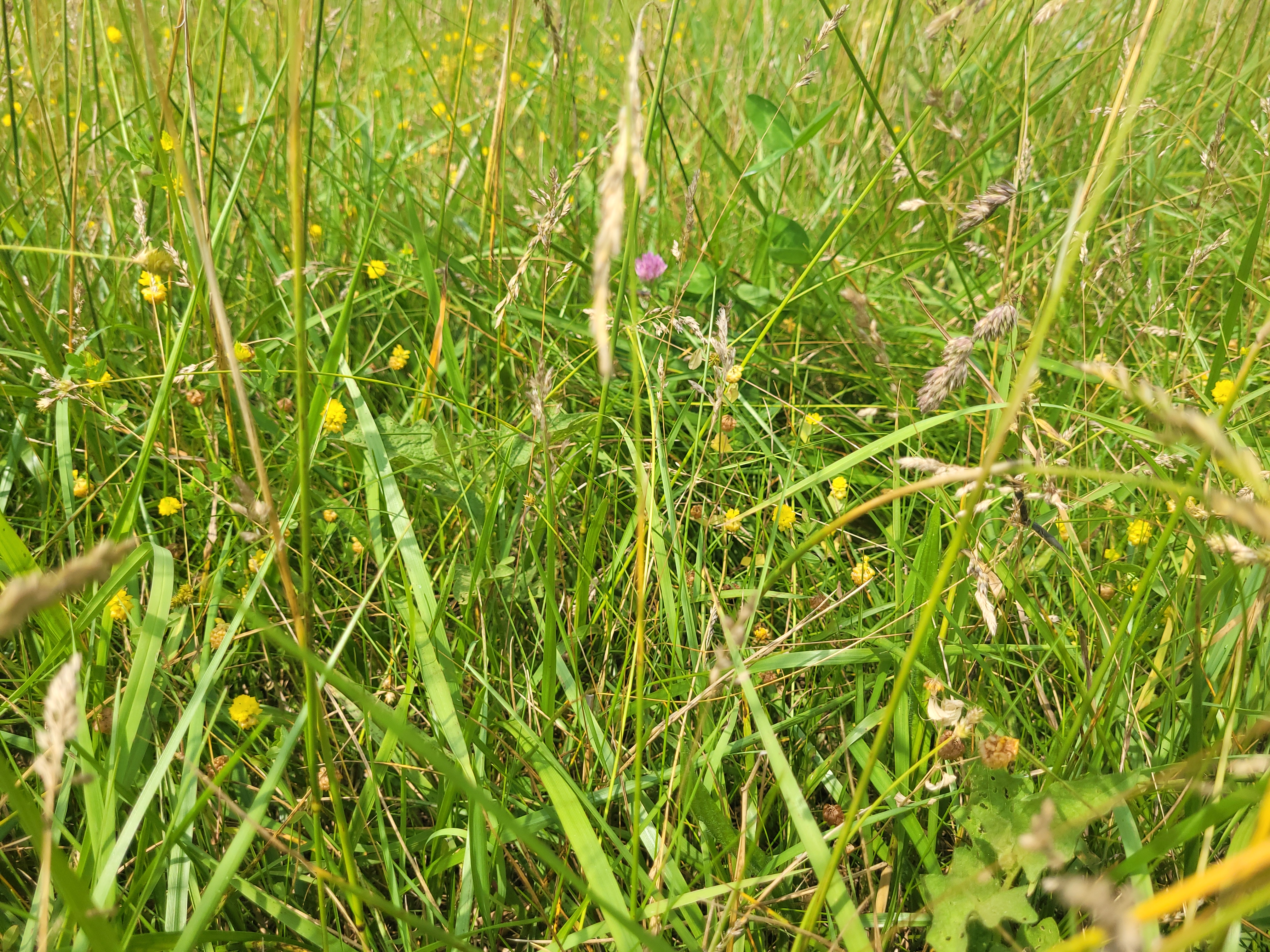
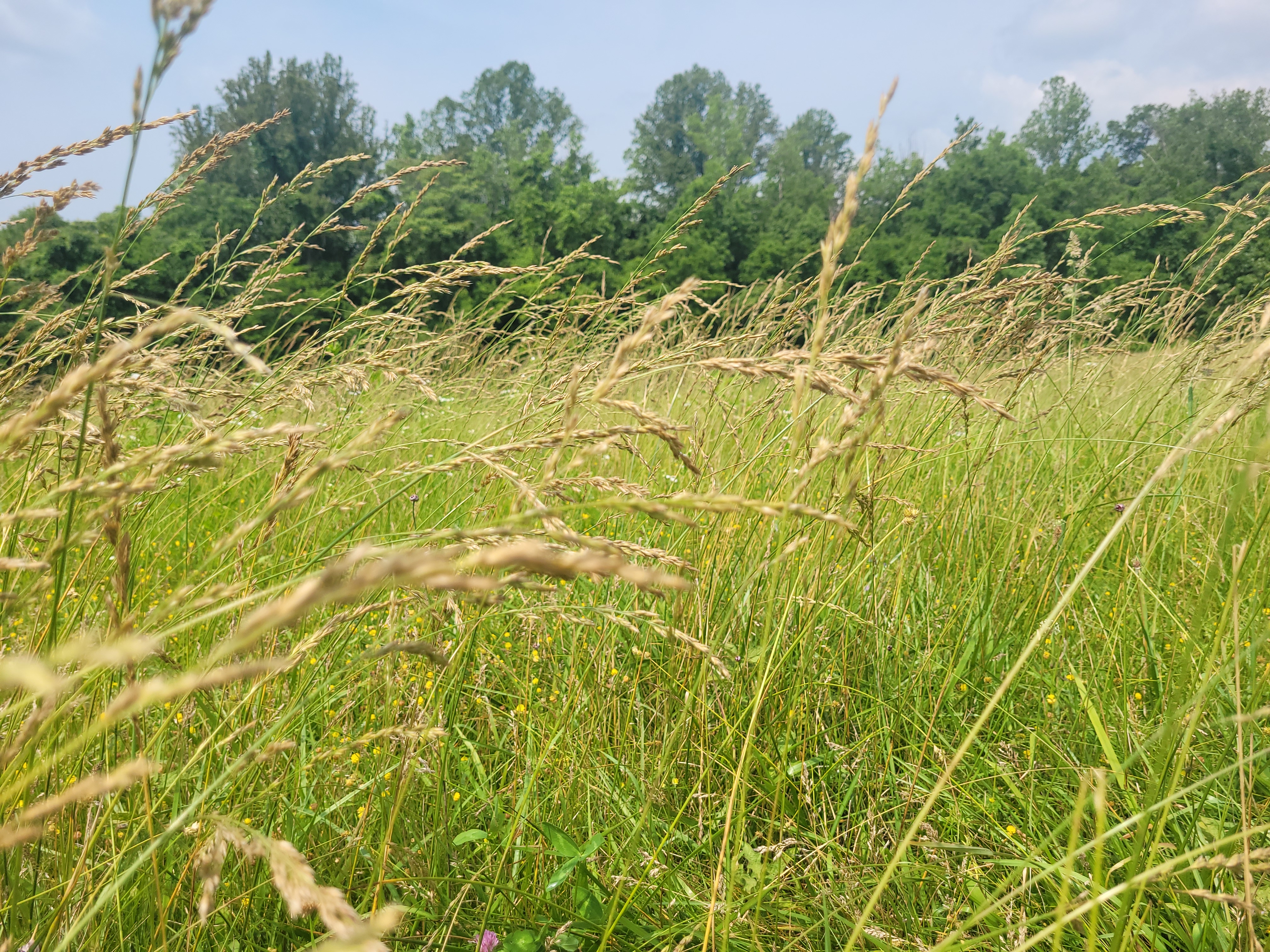
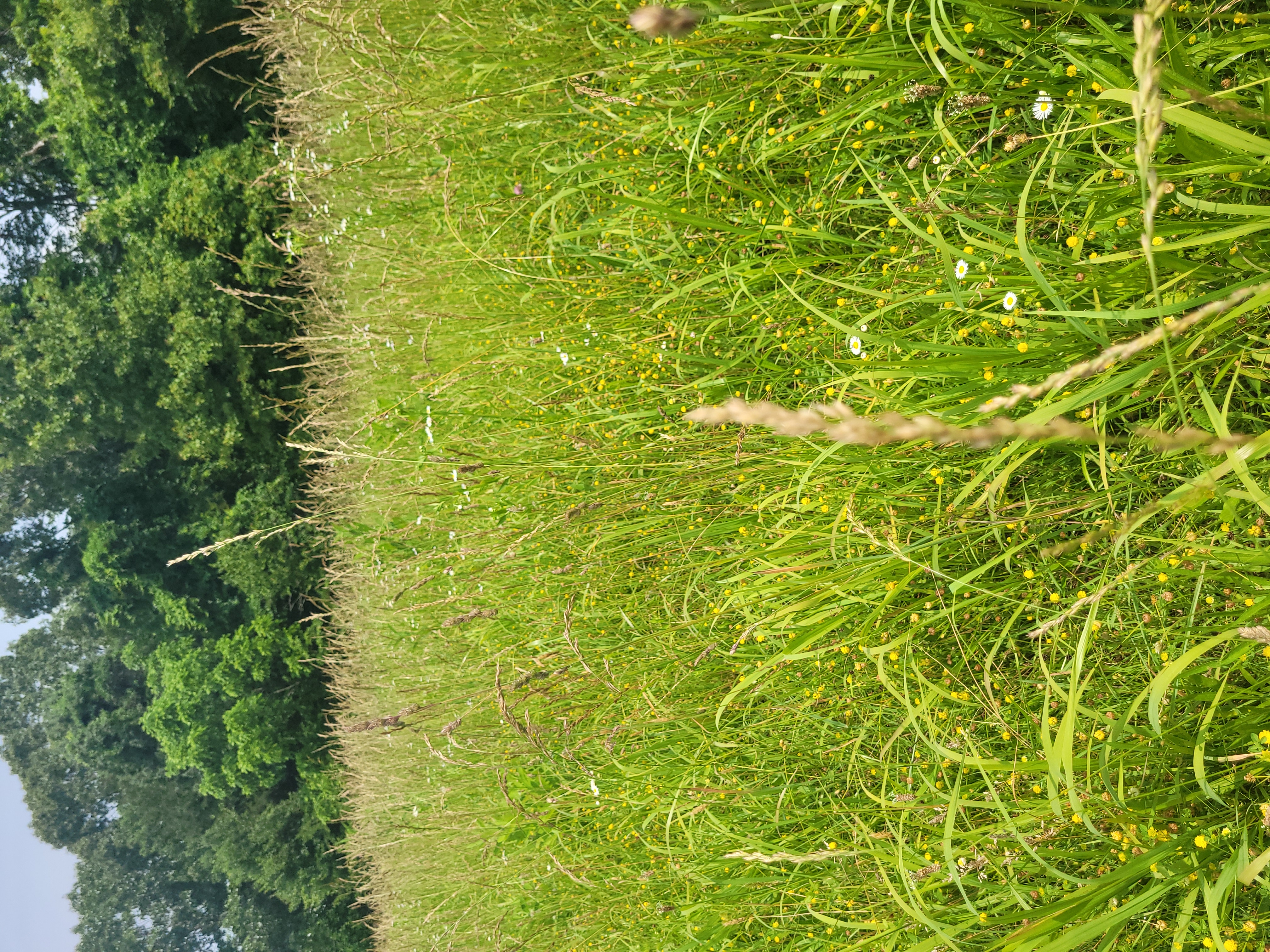
Lower Field
From the main campus hilltop, I headed downhill toward Possum Trot. The improved moisture and fertility was immediately visible in the standing hay crop: the grass was leafier, taller, and more dense. It also contained more orchard grass in the mix – good news if you’re a cow!
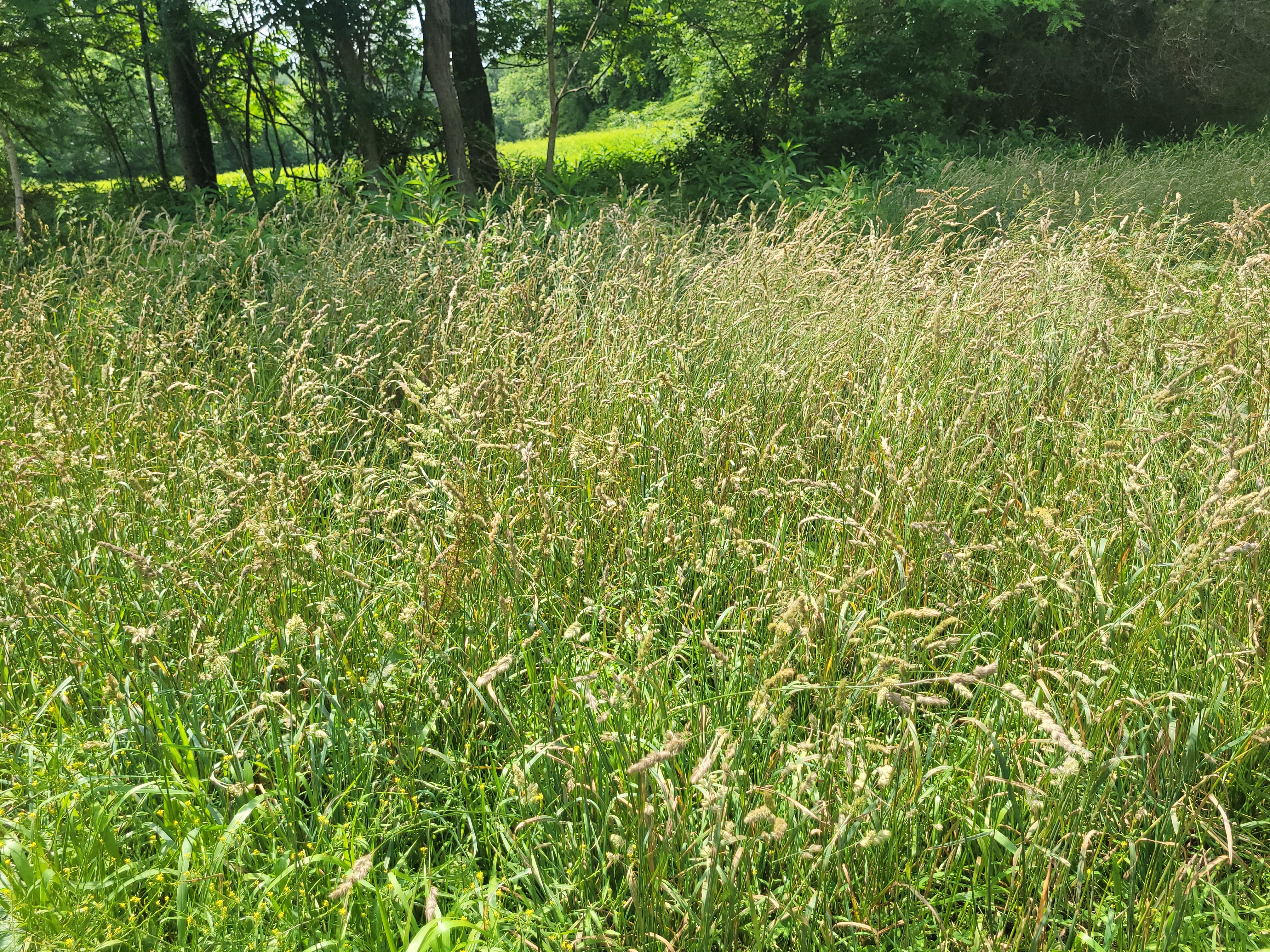

This field also has a depression in the middle, and that day, there was standing water in it. Even from a distance, a wet spot is identifiable by its impact on the plant life. Around here, that usually means dogbane and rushes:
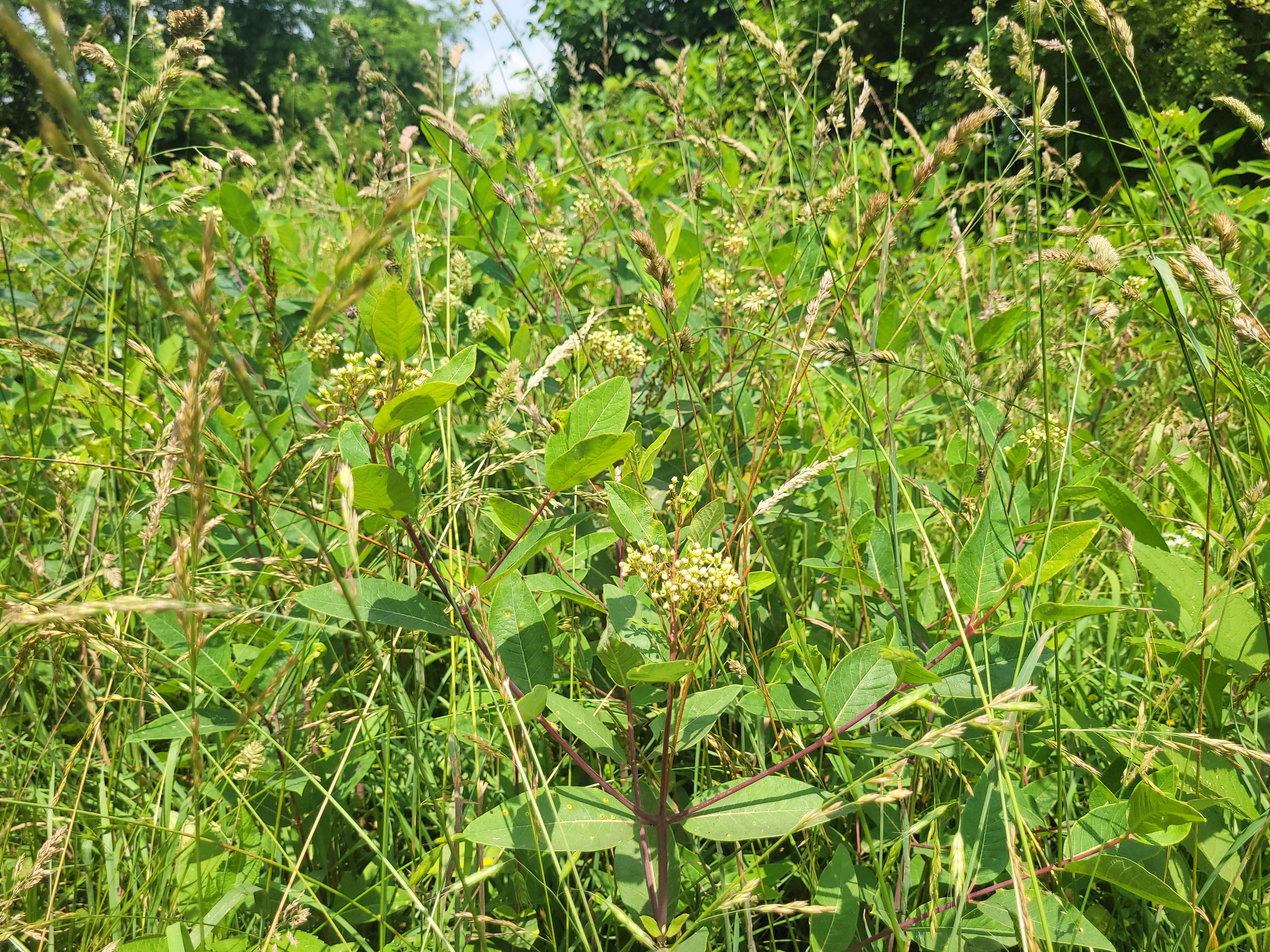
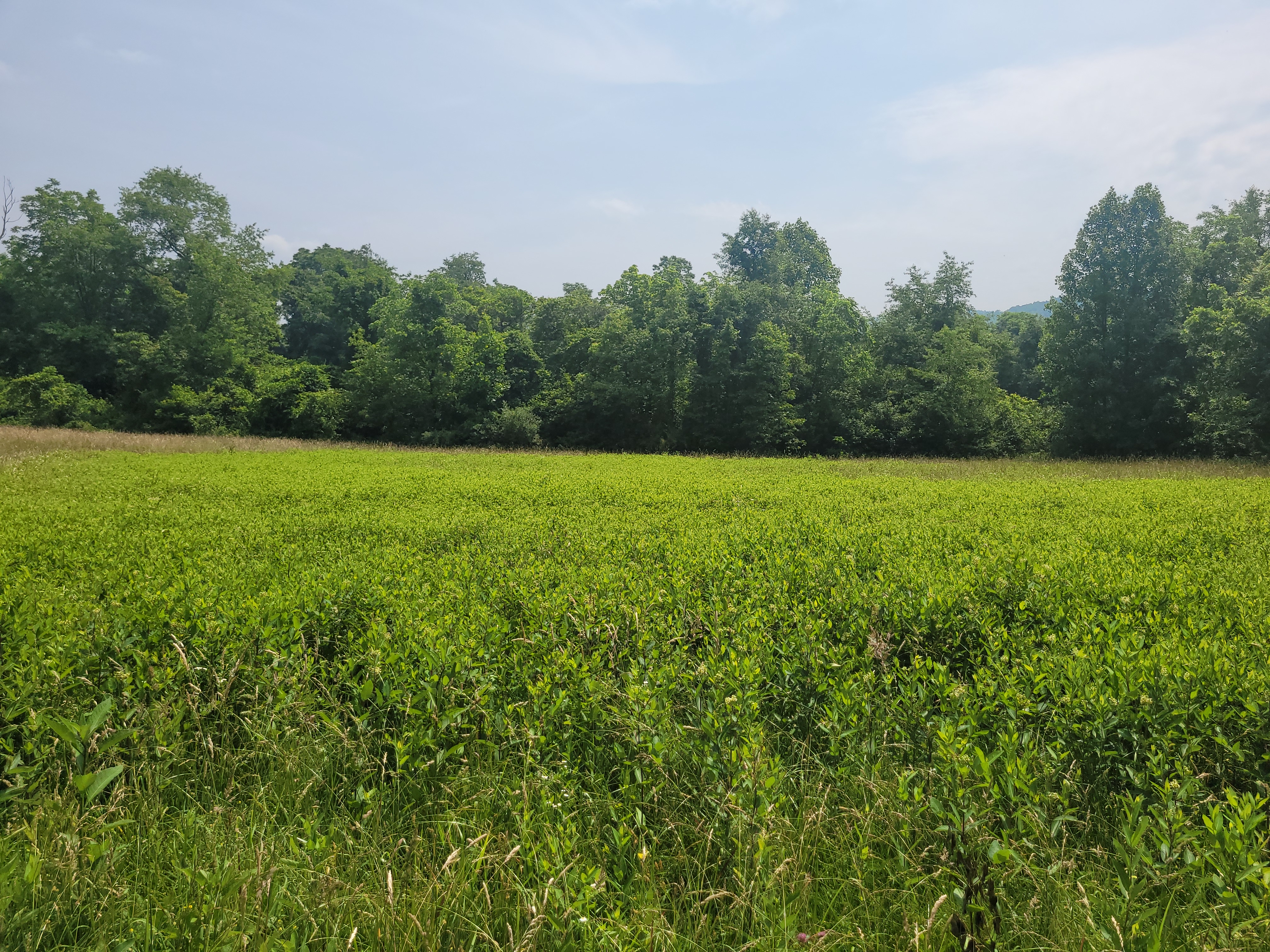
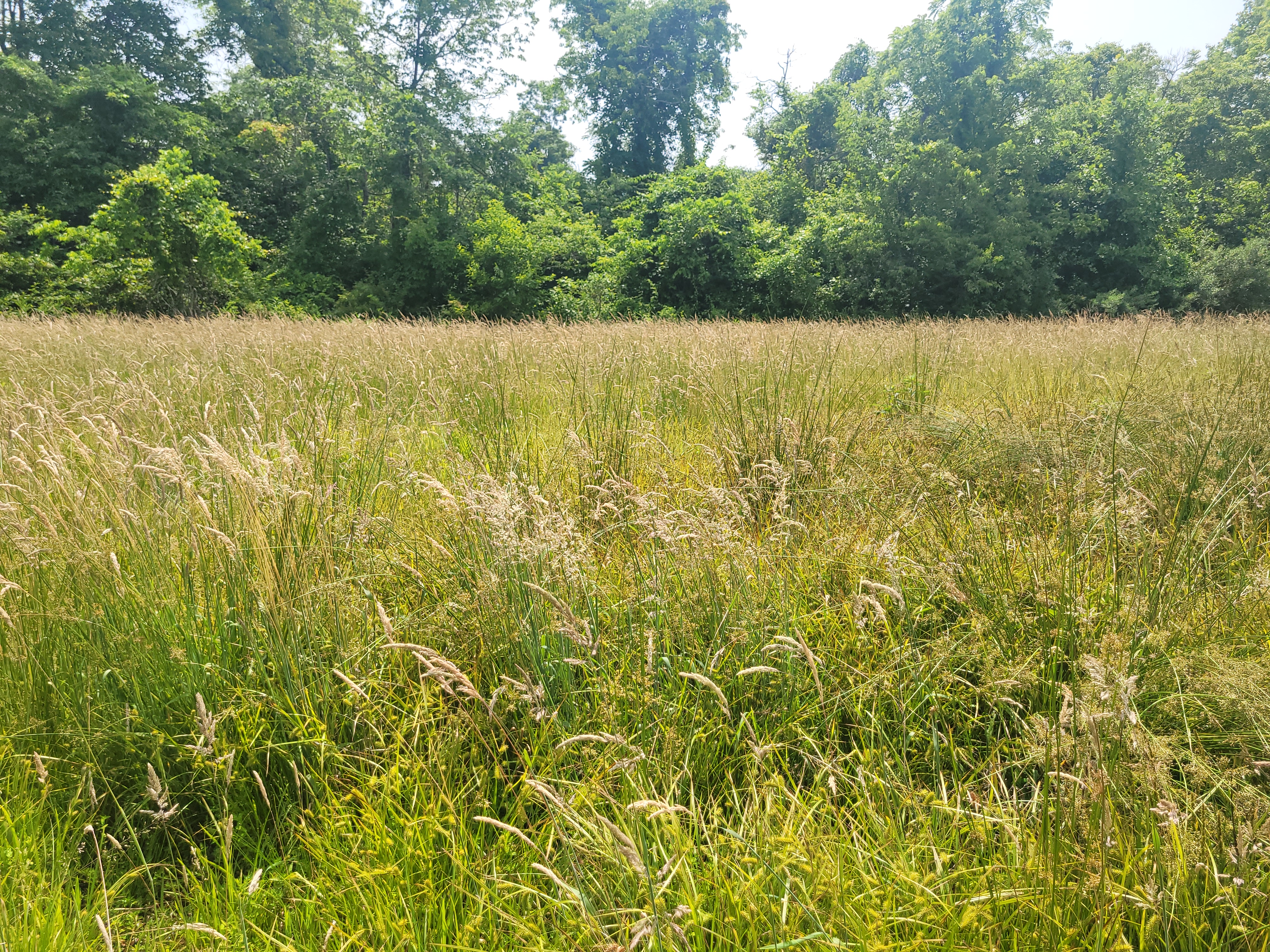
(Dogbane looks like milkweed but can be distinguished by its finer, reddish stems. It’s poisonous … although my goats used to eat it!)
I’ll be interested to see how we can make use of this wet spot in the future. It could be one of the most productive pastures on campus during the heat of the summer!
I loved seeing the understory of white clover in this field. Also, here’s a picture of mature orchard grass leaves. They’re bluish, with a defined crease in the middle:
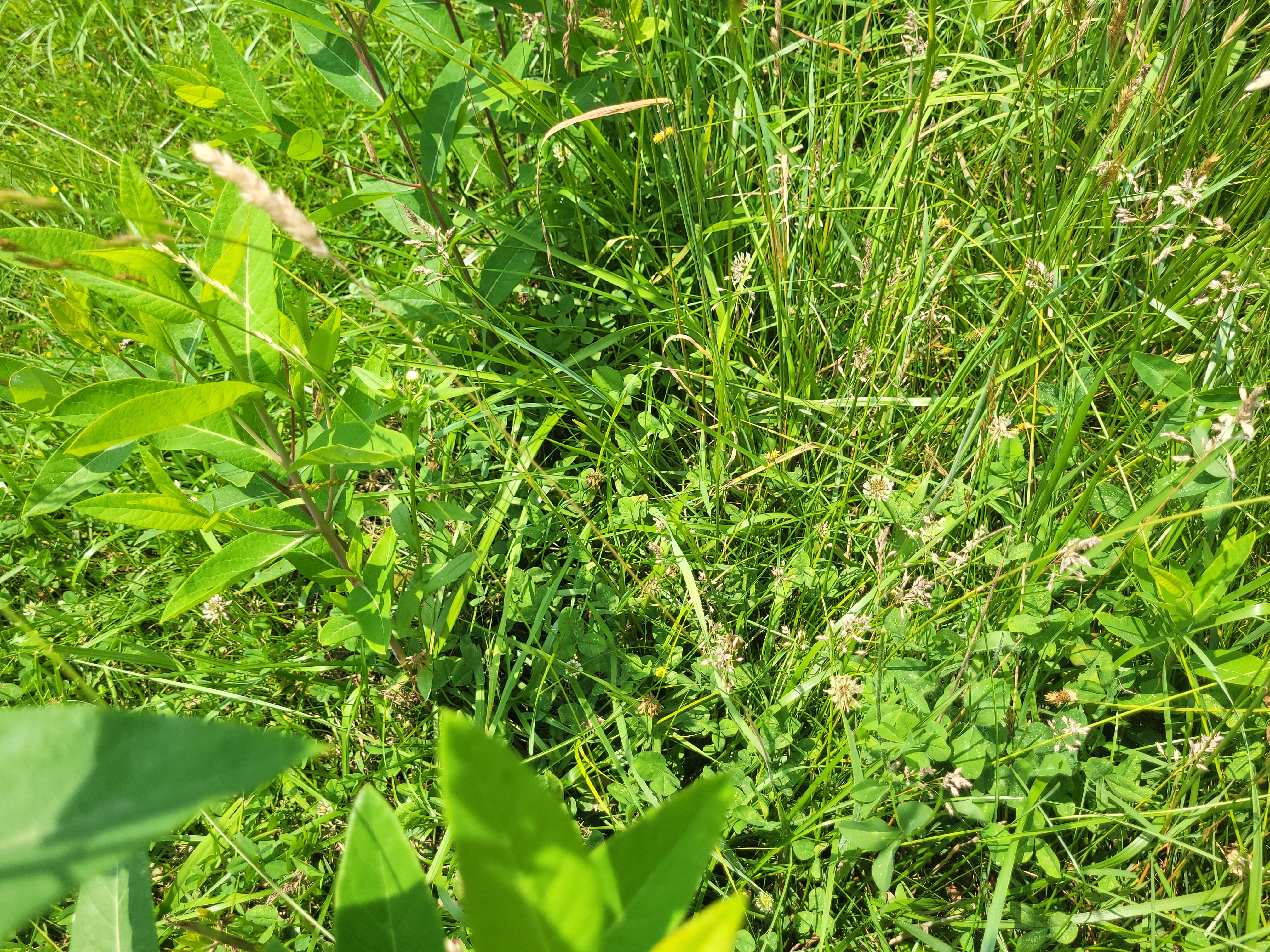
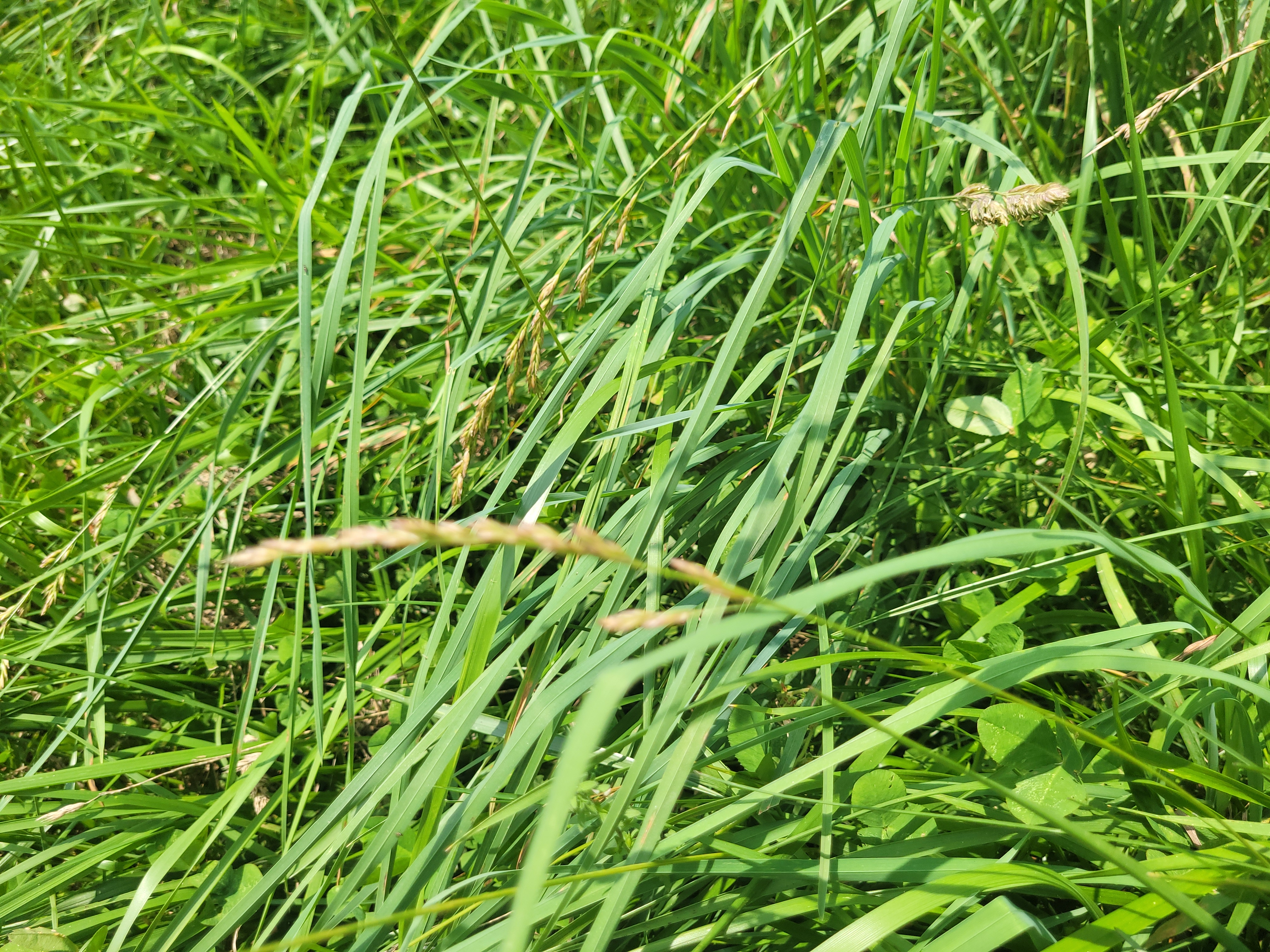
Main Field
My next stop was the large field in the middle of campus, bordered by Possum Trot on one side and not far from the farmhouse. This field is a mix of the previous two: some high, dry hillsides, and some lower, flatter land.
There was lots of variety here. One thing that stood out to me was the beginnings of the main warm-season grass here, johnson grass. At this time of year, it starts forming clumps of wide leaves with reddish streaks. (Sorry about the bad photo … it seems like my camera had a smudge!)
I also spotted some early growth of broom sedge in this field. By fall, it will appear was tall, brown, wispy clumps – like brooms. The second photo is young broom sedge; the third photo is a bit of last year’s broom sedge left over, for comparison.

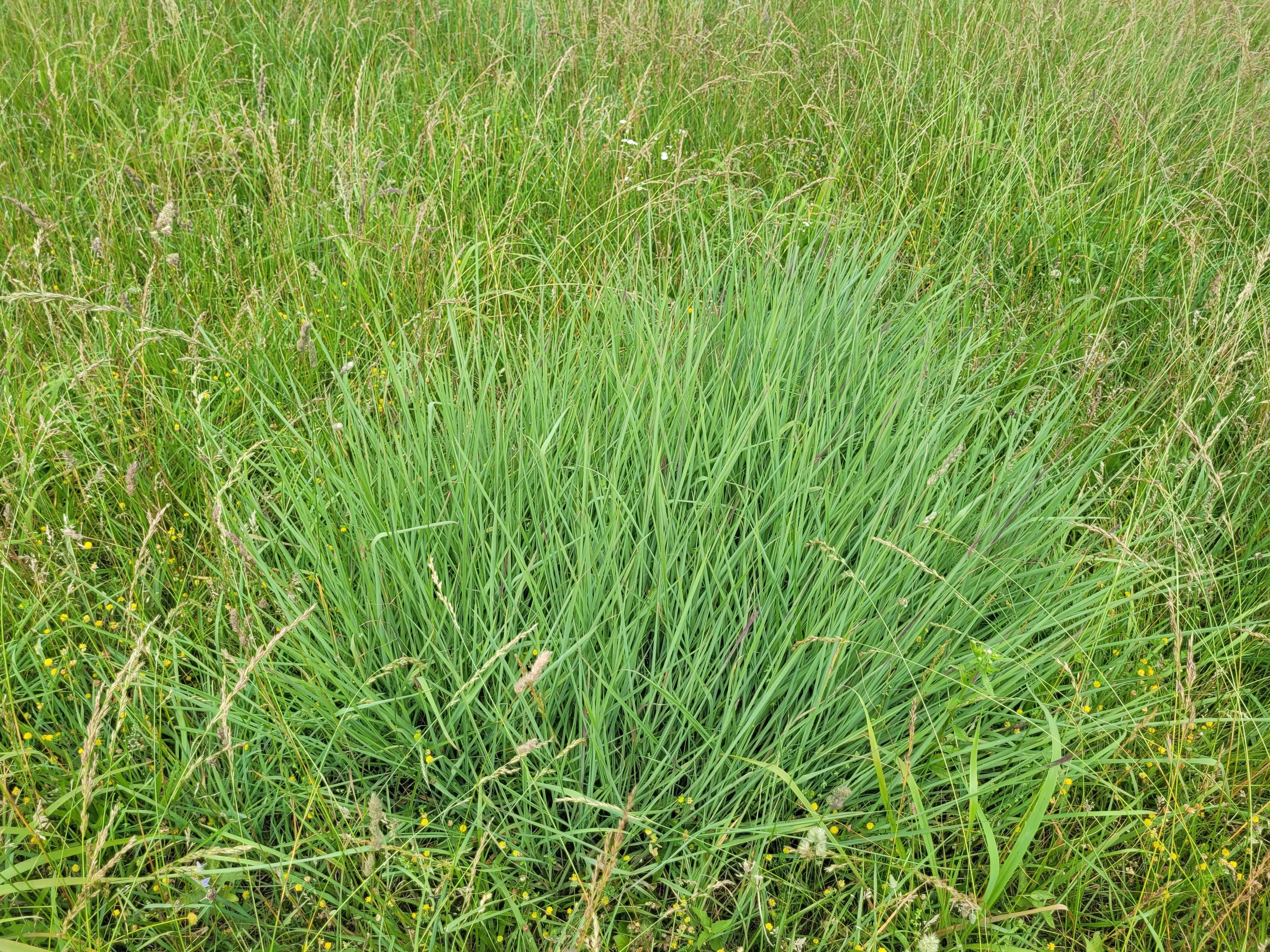
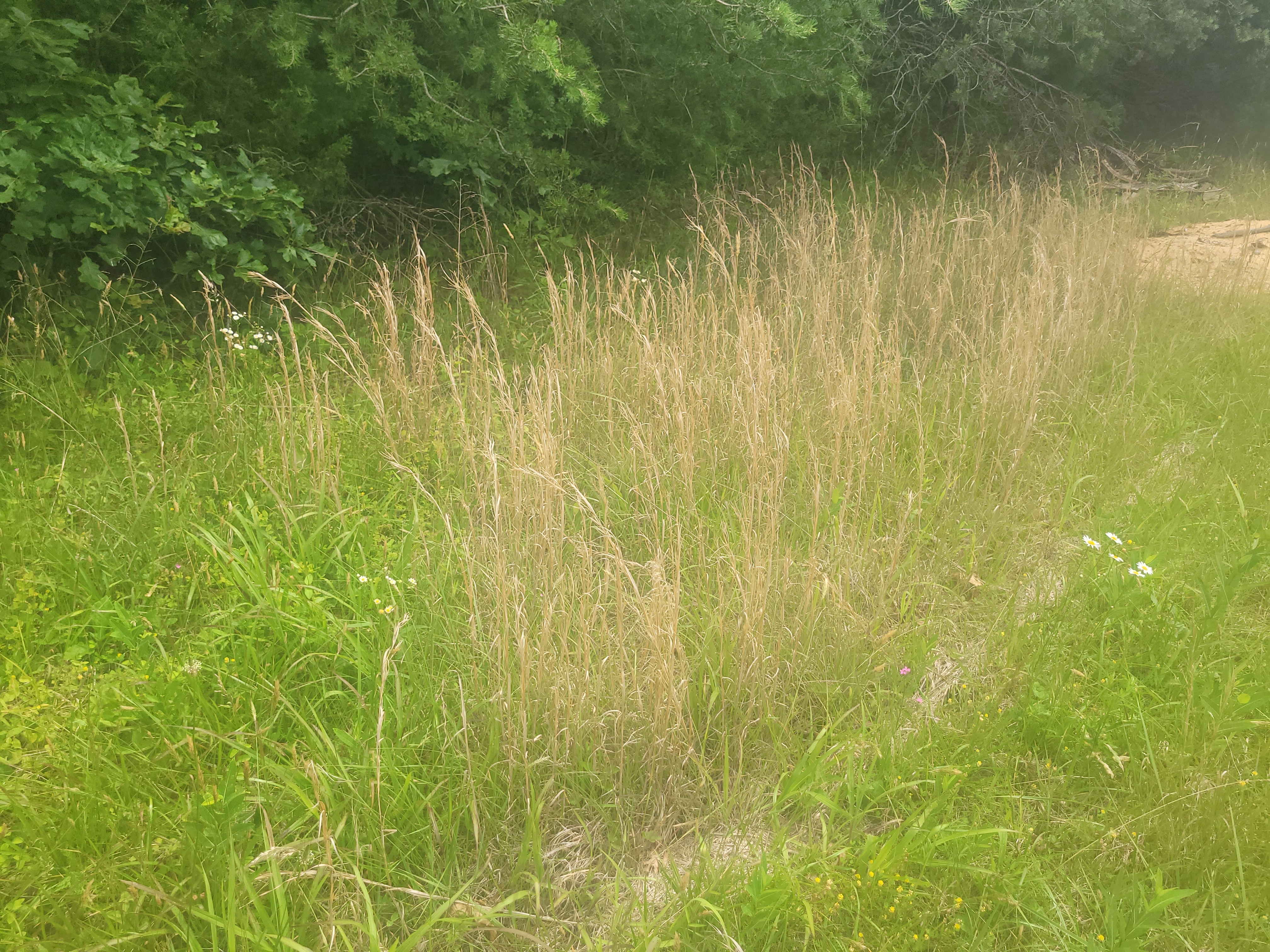
By late summer, the johnson grass will have grown into tall stalks – almost like corn – with large seedheads at the top. My cows like them just fine, all summer long. Johnson grass keeps growing and stays palatable even through the hottest stretches too, which is great.
After this, I walked over to the field where the sawmill is, and back up to Malley’s field, where I spotted some common milkweed. Milkweed isn’t much good for hay, but butterflies love it!
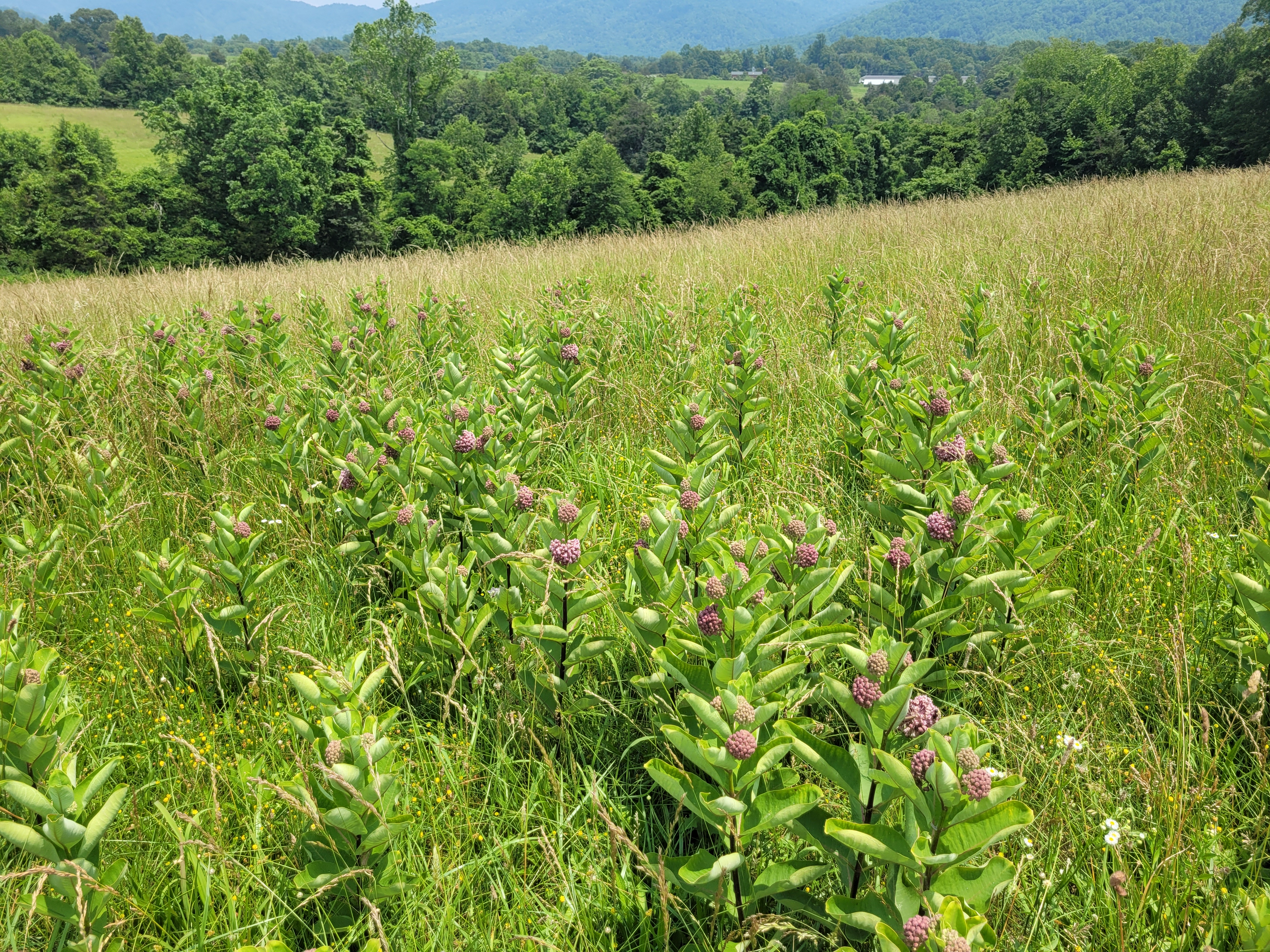
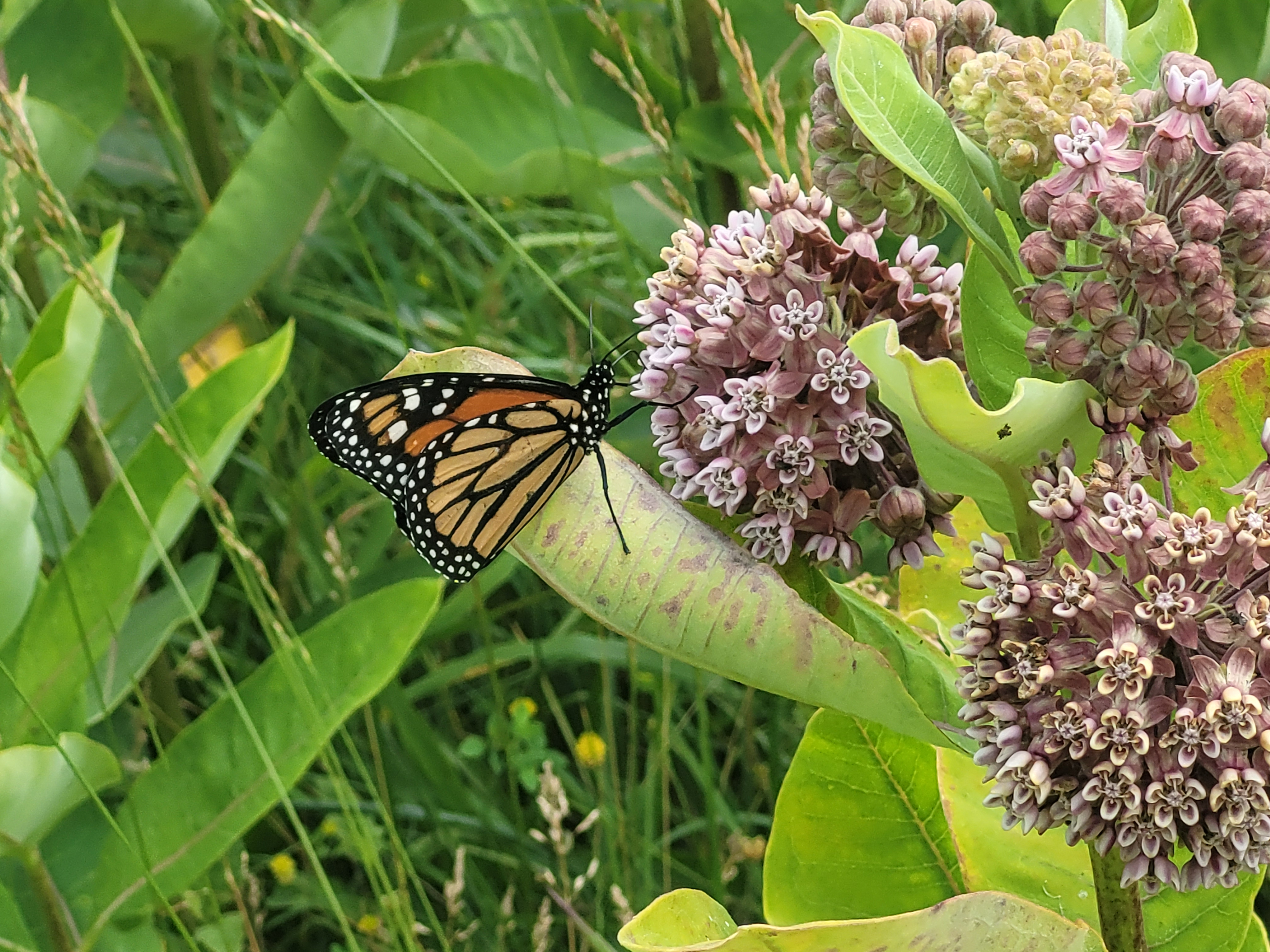
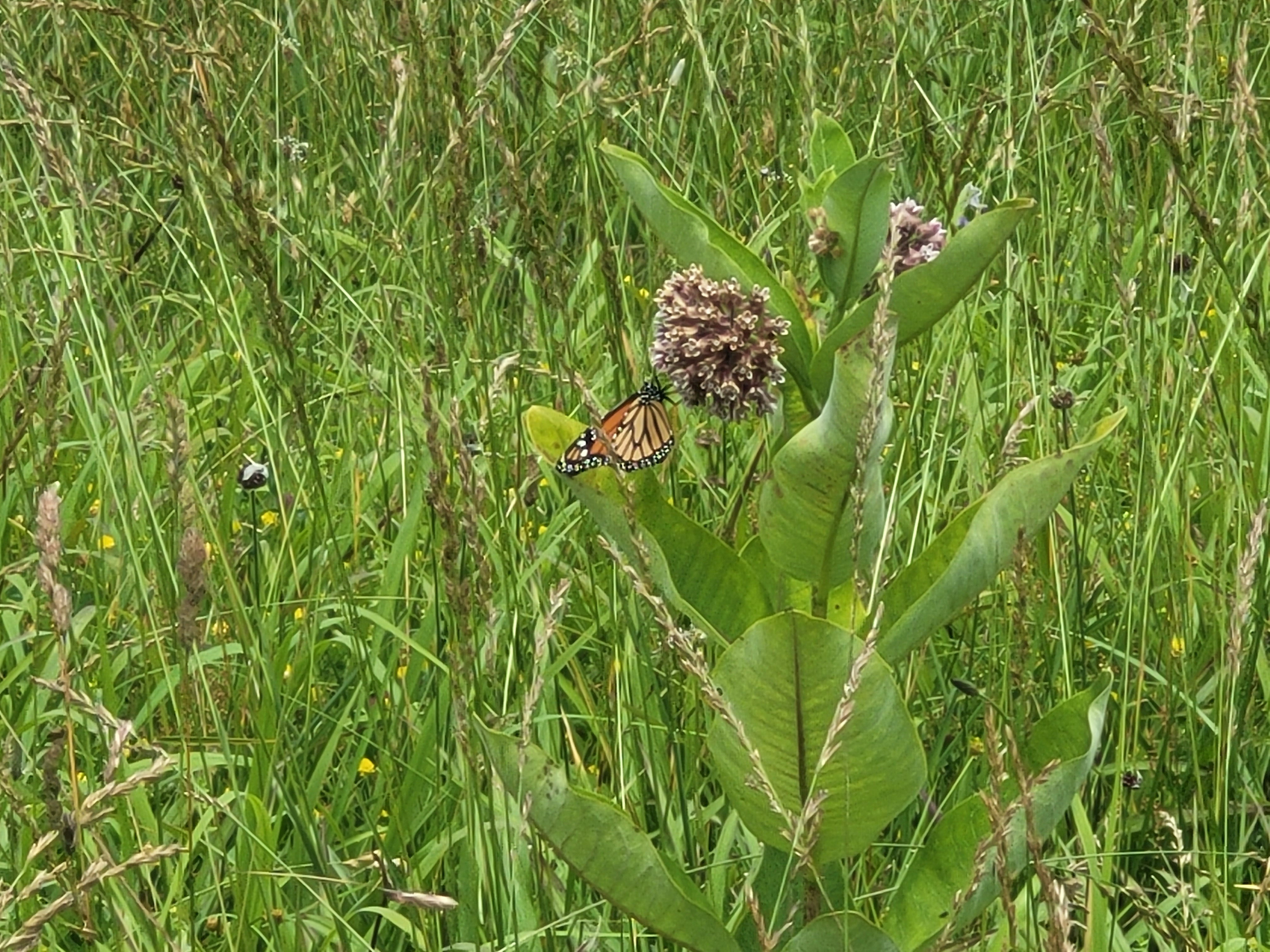
Forbs and Browse
Pastures are mostly characterized by grasses. Here in Central Virginia, as in most of the Atlantic region, that’s primarily tall fescue, orchard grass, johnson grass, and then a long tail of others (perennials like timothy, bermuda grass, quack grass and grease grass; annuals like crabgrass and barnyard grass).
Second come legumes: white clover, red clover, common vetch, and other minor ones. I love legumes because they’re especially good for my dairy cows (high protein!), and I like their flowers:
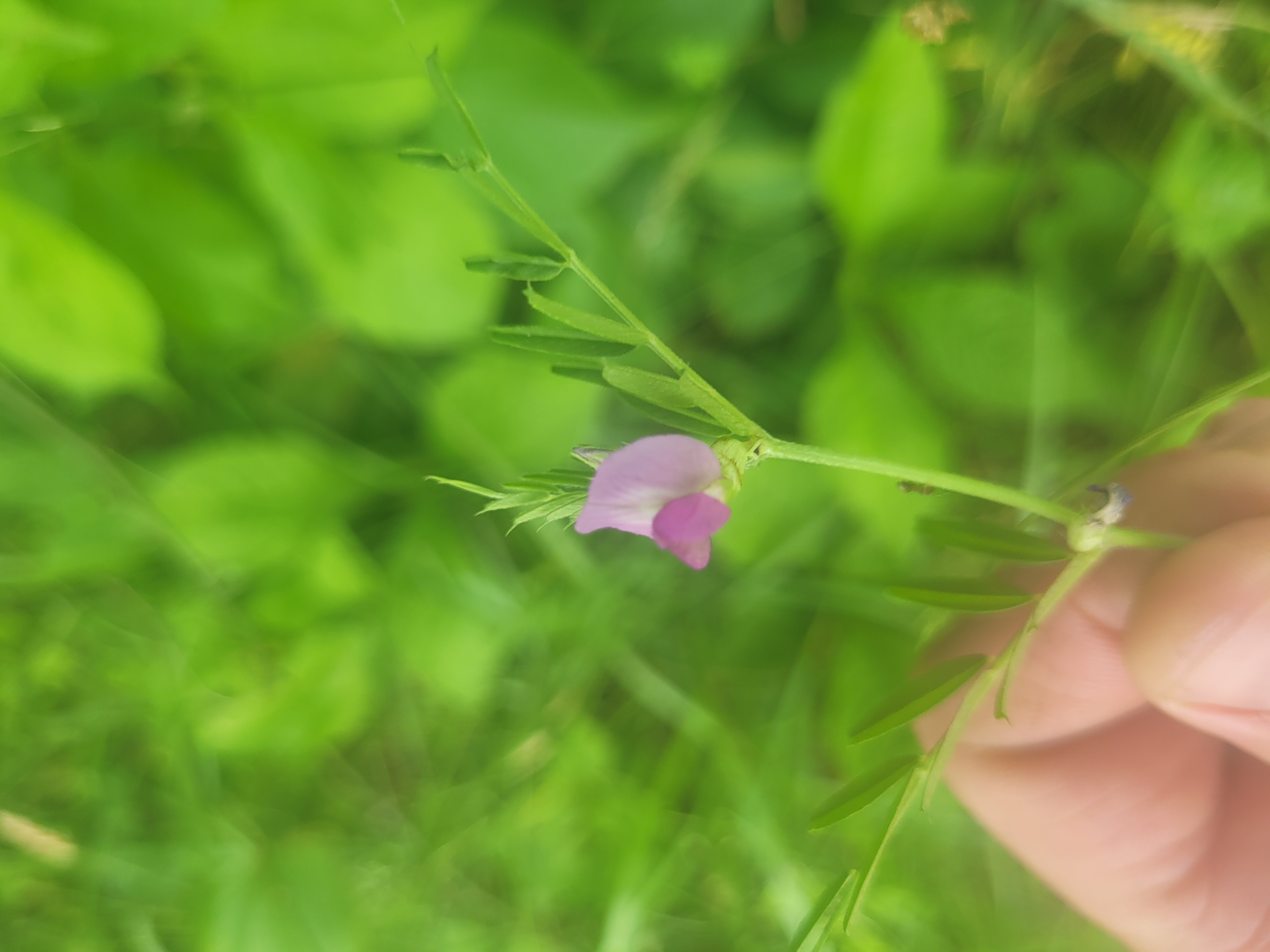
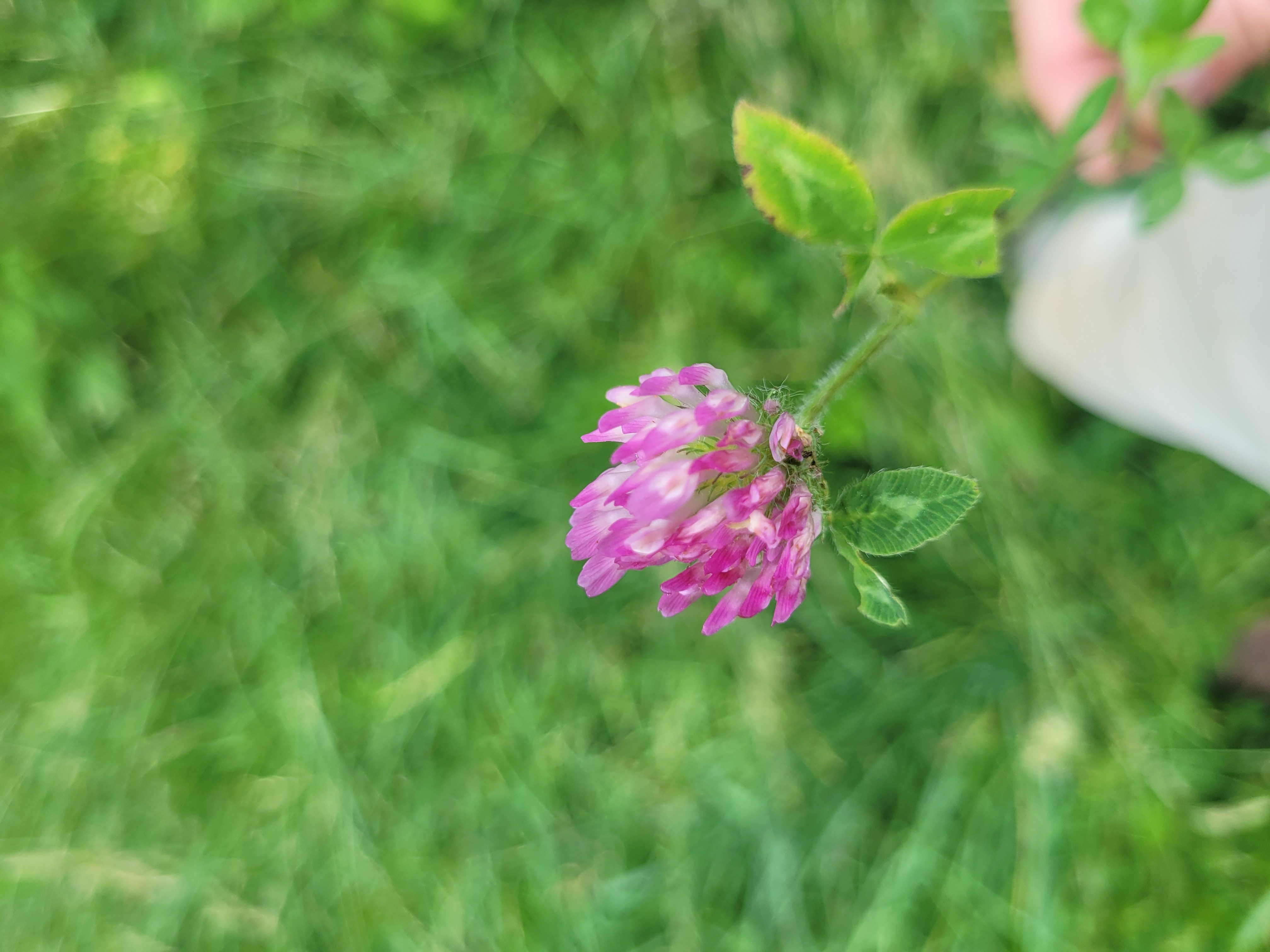

Third come forbs. This is a catch-all category for plants that grow on the ground but aren’t grasses or legumes. They make up a small portion of a cow’s diet, but many of them have known medicinal properties. (And personally, I suspect that the rest of them have unknown medicinal properties!)
I saw some of my favorites in the pastures (narrow-leaf plantain, broadleaf plantain) as well as some that are more like weeds (lespedeza, goldenrod).
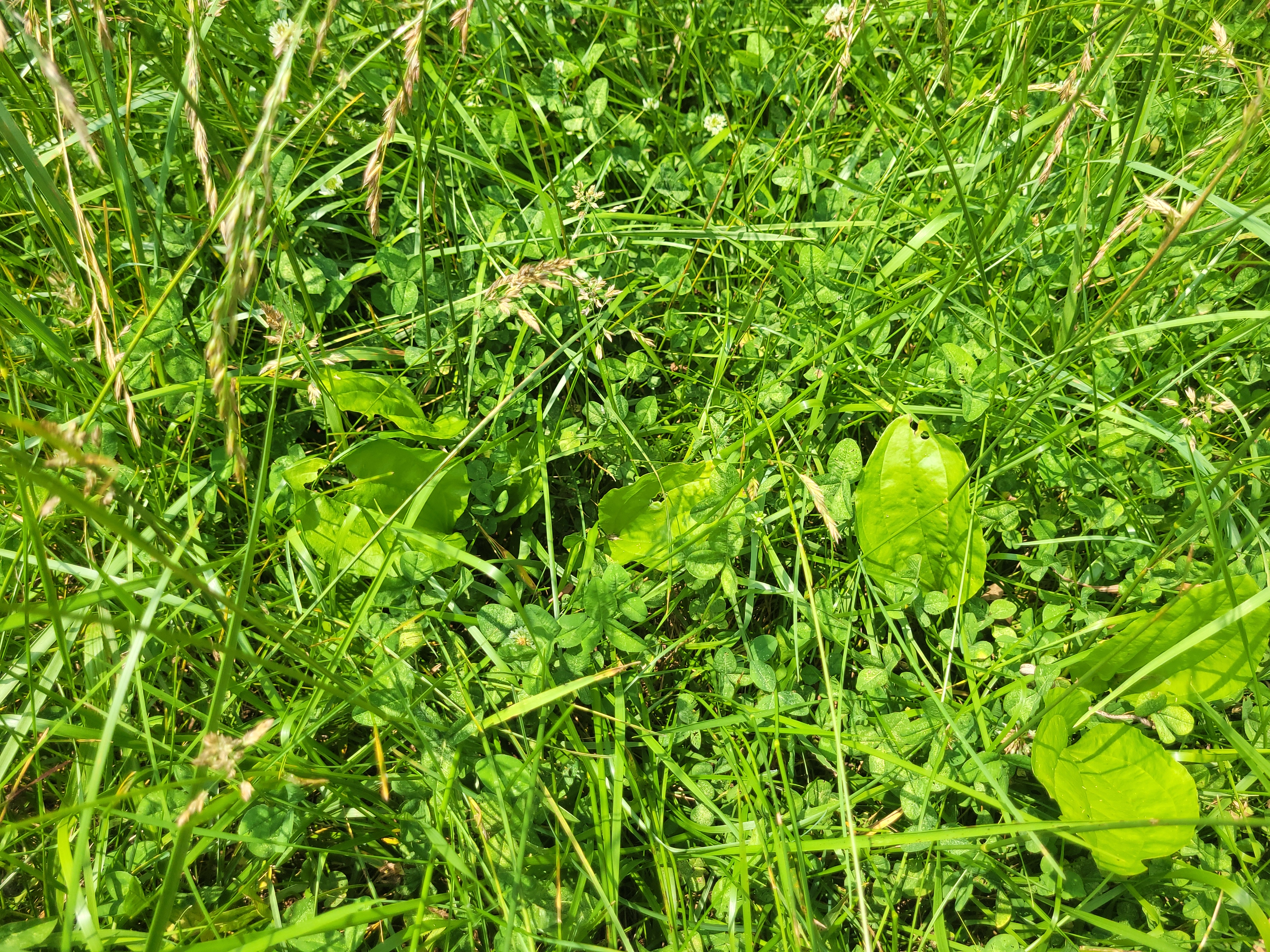
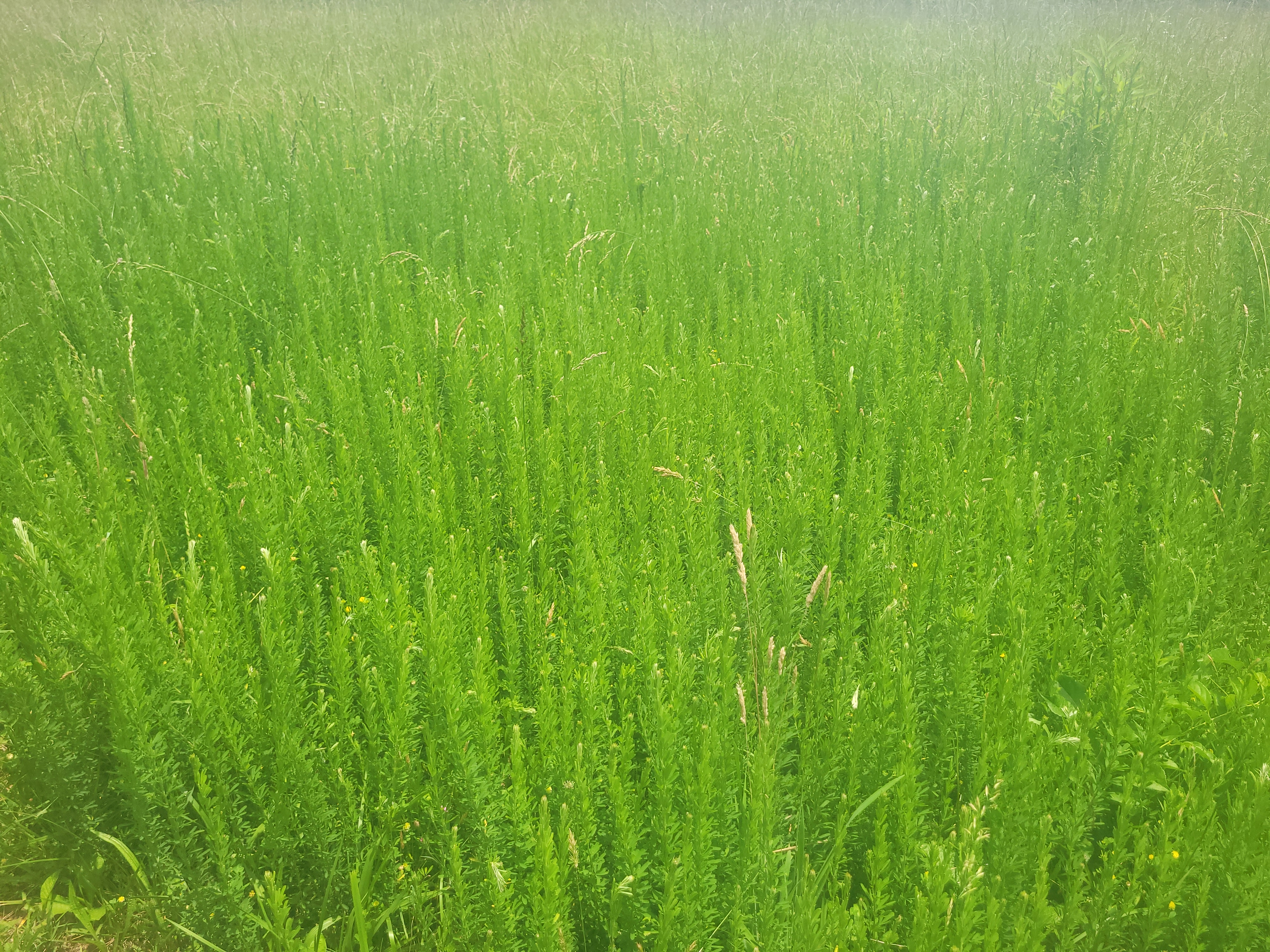
It’s not nice for me to call lespedeza a weed: it’s known to help ruminants manage internal parasites!
The final category of forage is browse: trees, bushes, vines, and the like. Again, these don’t compose a large portion of a cow’s diet by weight, but I suspect that it’s an important part. When I turn my cows into a new paddock, they often go straight for low-hanging tree leaves, tender bramble shoots, or new growth on low vines. For that reason, I was happy to see many of my cows’ favorites here. Elder, black locust, and autumn olive:


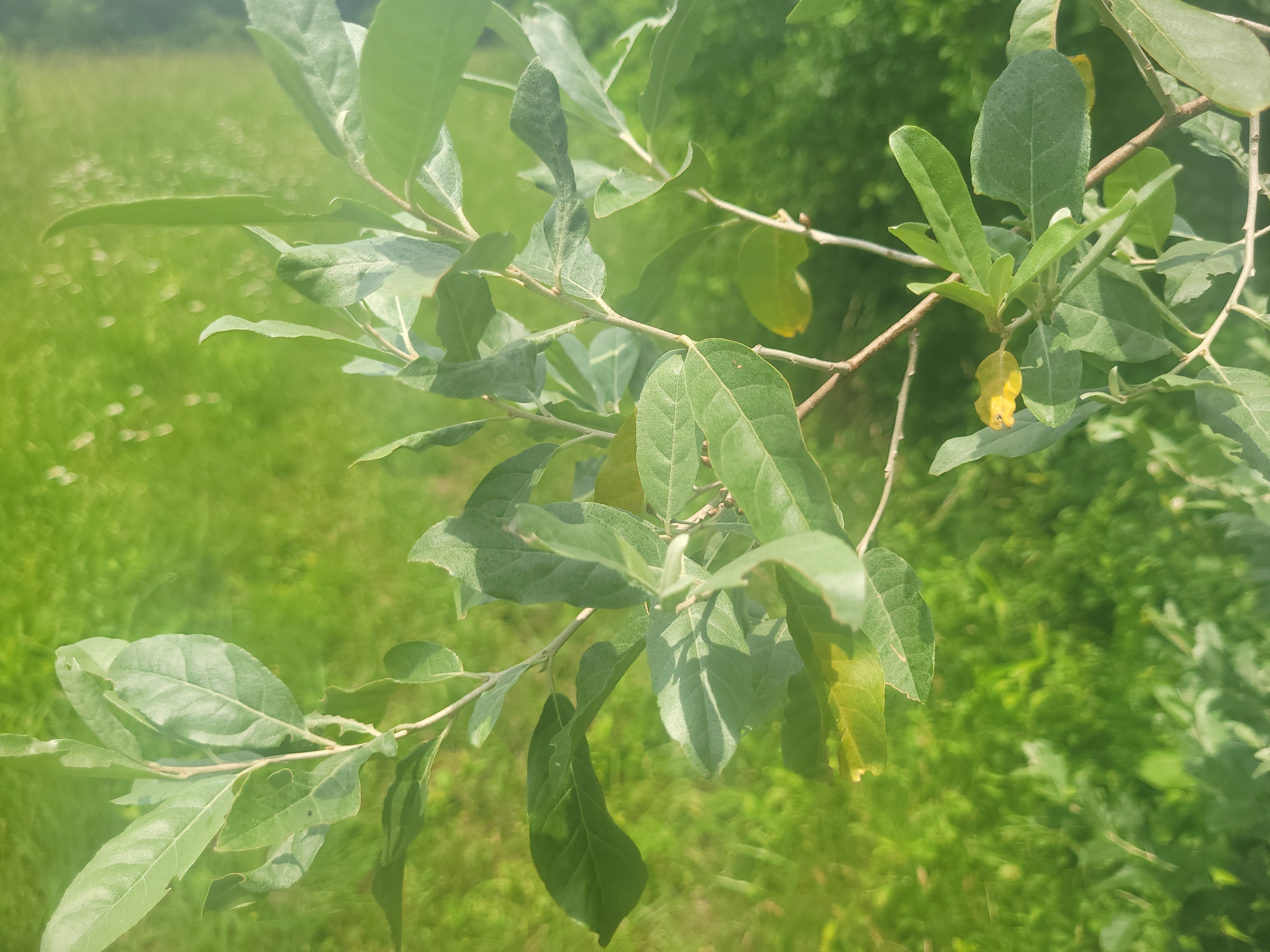
Wild grape, hazel, wild cherry:
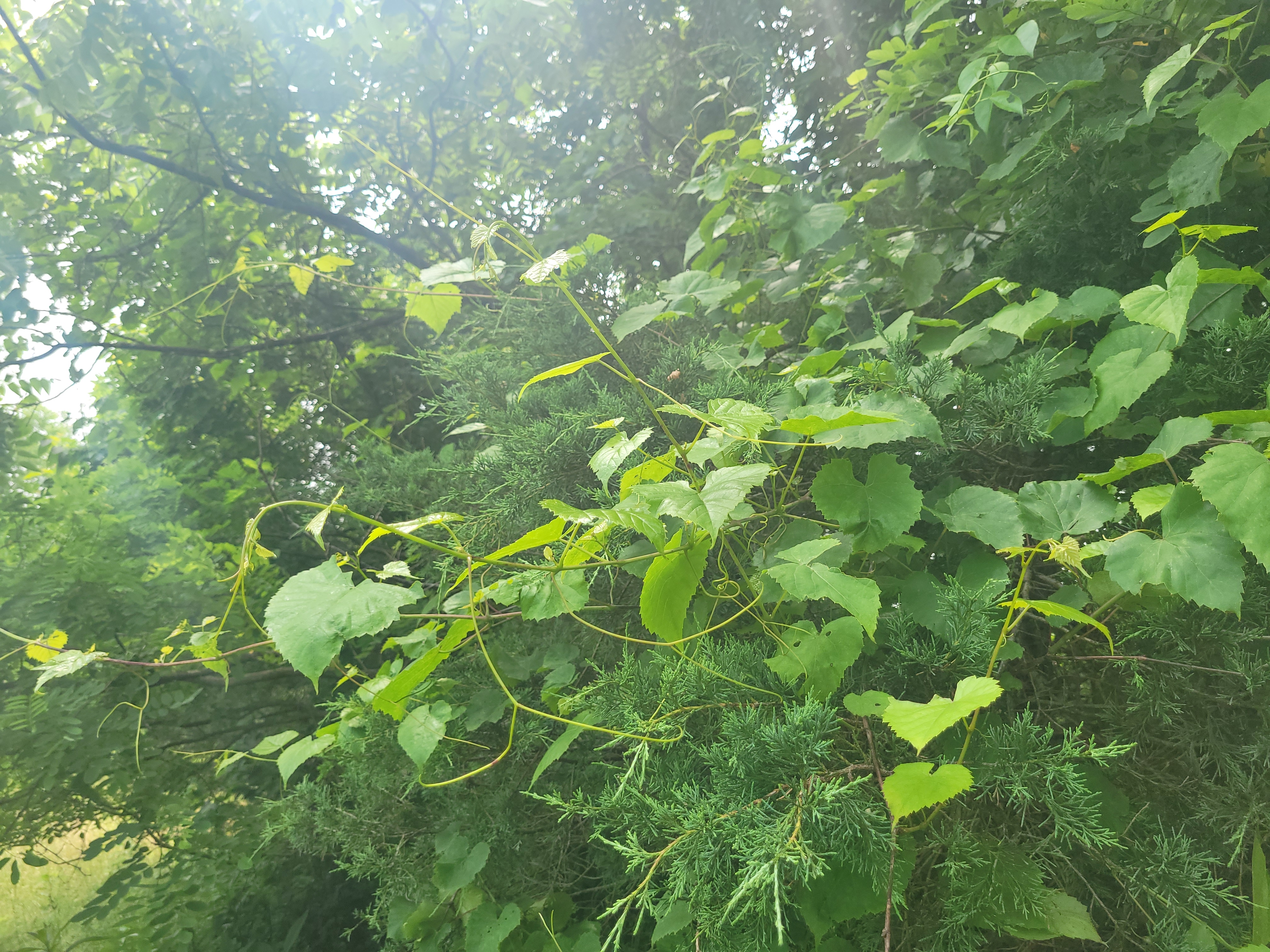
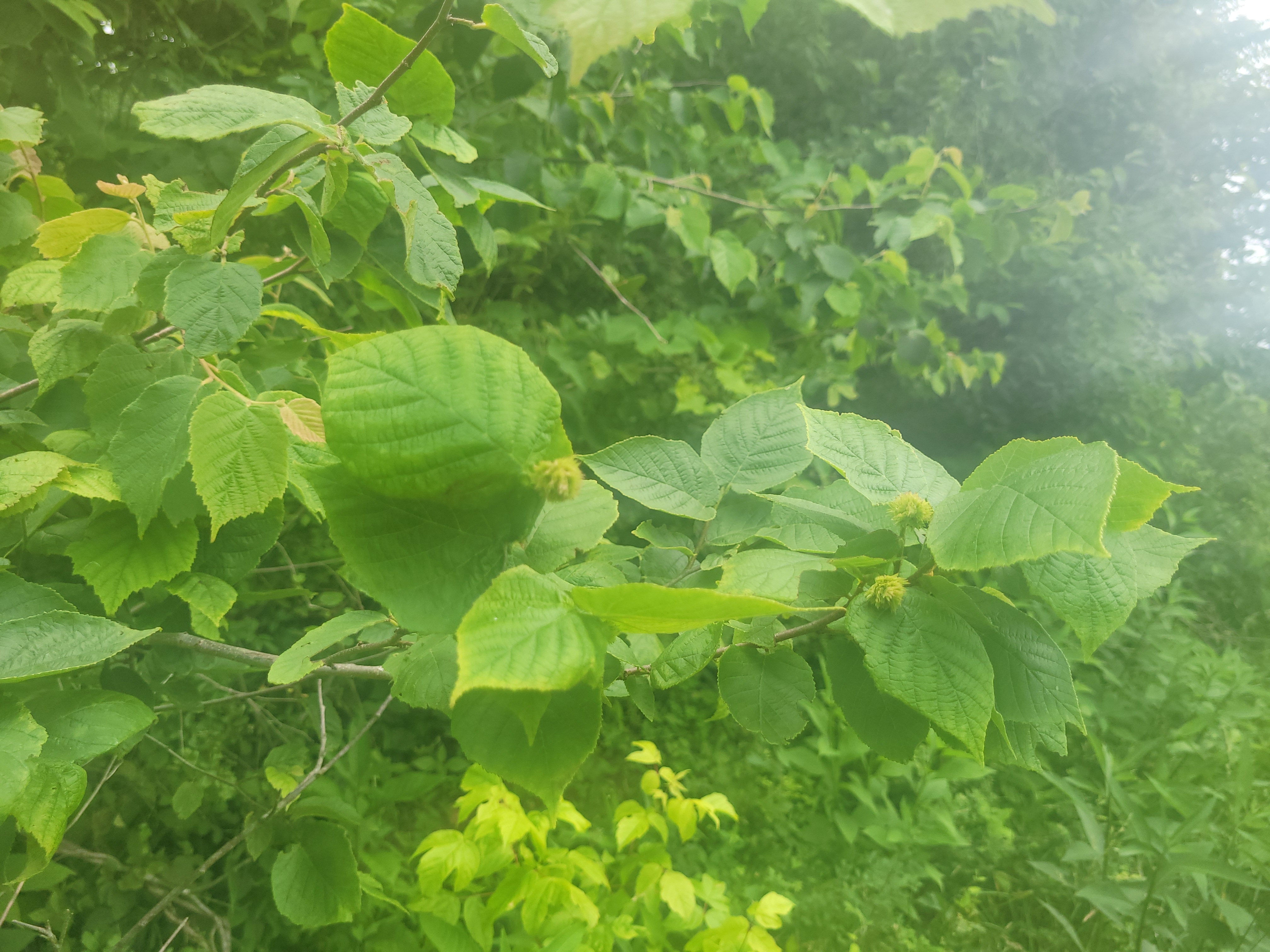
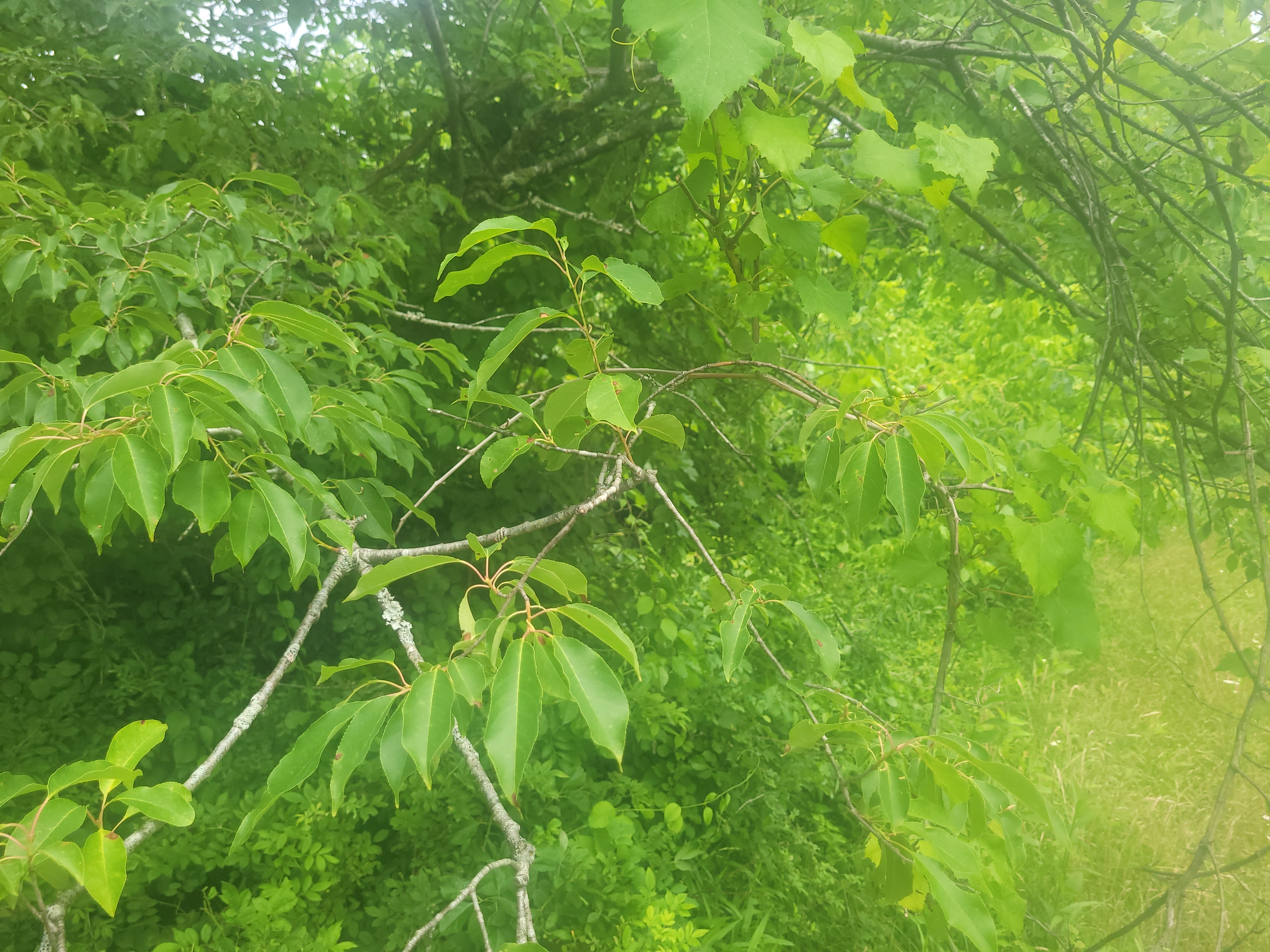
Wild cherry needs special attention: when leaves are wilted (as when a branch falls in a storm), they’re acutely poisonous to ruminants. So, keep an eye on the weather when the cows are in that field! Some farmers remove theirs as a rule, but my cows seek out fresh leaves, so I haven’t removed my wild cherry trees.
Looking Ahead
We still have a lot of prep work to do on campus before we’re ready to start grazing these fields, but they’ll clearly be a great starting place for our school farm. We’ve got a wide variety of species and microclimates, so our herds and flocks will be well fed throughout the grazing season. After a few years of rotational grazing, we’ll see denser growth of desirable forage plants and less and less weed pressure. I can’t wait to get to work on it!